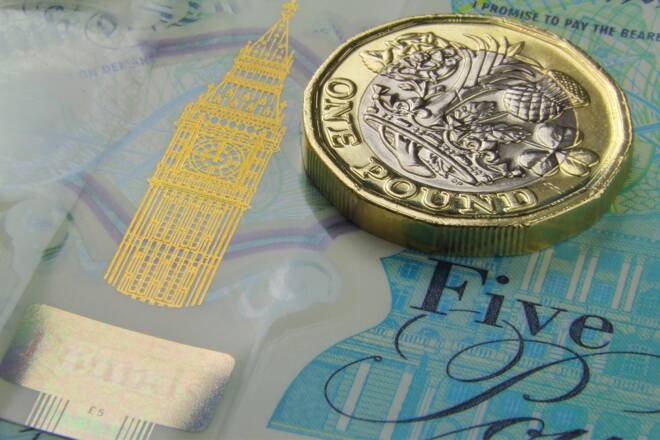Advertisement
Advertisement
GBP to USD Forecast: Pound Eyes UK Inflation; Cable Braces for FOMC Decisions
By:
GBP/USD movements highlight the tension between UK's inflation surge and the US's resilient economic posture, indicating significant Cable shifts ahead
Highlights
- The GBP to USD pair edged up 0.08% on Tuesday, settling at a close of $1.23916.
- UK’s August inflation report, set to unveil on Wednesday, is eyed keenly by investors.
- FOMC’s interest rate decision on Wednesday is anticipated, with projections hinting at stability.
Overview of the Tuesday Session
On Tuesday, the GBP to USD pair gained 0.08%. Following a 0.01% rise on Monday, the GBP/USD ended the day at $1.23916. The GBP/USD pair fell to a low of $1.23699 before rising to a Tuesday high of $1.24248.
UK Inflation Takes the Pre-Bank of England Stage
The UK inflation report for August will garner significant investor interest on Wednesday. Economists forecast the UK annual inflation rate to accelerate from 6.8% to 7.0%. Notably, economists project consumer prices to increase by 0.7% in August and for producer input prices to rise by 0.2% versus a 0.4% decline in July.
A pickup in inflationary pressure would support market bets on a Bank of England 25 basis point rate hike.
Higher interest rates influence labor market conditions and wage growth. Softer wage growth weighs consumer spending, easing demand-driven inflationary pressures. However, UK private consumption accounts for over 60% of GDP. The prospect of higher interest rates raises the chance of a prolonged UK recession.
The Fed, the Fed Chair, and the Economic Projections
The FOMC will deliver its interest rate decision and economic projections on Wednesday. With the markets betting on the Fed hitting the pause button, investors will focus on the FOMC economic projections and press conference.
Upbeat revisions to GDP, inflation, and unemployment would fuel bets on a November Fed rate hike. Notably, a more hawkish outlook would ease bets on a 2024 Fed interest rate cut.
Fed Chair Powell will likely provide more color during the FOMC press conference. Investors should consider the economic projections and unexpected comments during the press conference.
While the UK economy heads toward an economic recession, the US economy remains resilient. The macroeconomic backdrop suggests the BoE may need to cut interest rates sooner. This scenario suggests a monetary policy divergence that favors the dollar.
Short-Term Forecast
UK inflation figures and the Fed could send the GBP/USD pair to sub-$1.23. Hotter-than-expected inflation numbers would pressure the BoE to hike rates and threaten a lengthier UK economic recession. In contrast, the Fed may have a more positive outlook, a dollar-positive scenario.
GBP to USD Price Action
Daily Chart
The GBP/USD pair remained below the 50-day and 200-day EMAs, sending bearish price signals. Failure to break above the $1.24410 resistance level would give the bears a run at sub-$1.23. A return to sub-$1.23 would support a GBP/USD move toward the $1.22150 support level.
Early movement will hinge on the UK inflation numbers and sentiment toward the UK economic outlook.
However, a break above the $1.24410 resistance level would support a GBP/USD move to the 200-day EMA. A dovish Fed rate pause would allow the GBP/USD bulls to target the $1.24410 resistance level.
The 14-period daily RSI reading of 31.52 shows the GBP/USD pair on the border of oversold territory.
4-Hourly Chart
The GBP/USD hovers below the 50-day and 200-day EMAs, reaffirming bearish price near-term signals. A GBP/USD break above the $1.24410 resistance level and 50-day EMA would give the bulls a run at the 200-day EMA.
Selling pressure will increase at the $1.2440 – $1.2447 range. The 50-day EMA is confluent with the resistance level.
Failure to break above the resistance level and 50-day EMA would give the bears a look at sub-$1.23 and the $1.22150 support level.
With a 41.71 reading on the 14-period 4-hourly RSI, the GBP/USD can return to sub-$1.23 before hitting oversold territory.
About the Author
Bob Masonauthor
With over 28 years of experience in the financial industry, Bob has worked with various global rating agencies and multinational banks. Currently he is covering currencies, commodities, alternative asset classes and global equities, focusing mostly on European and Asian markets.
Advertisement
